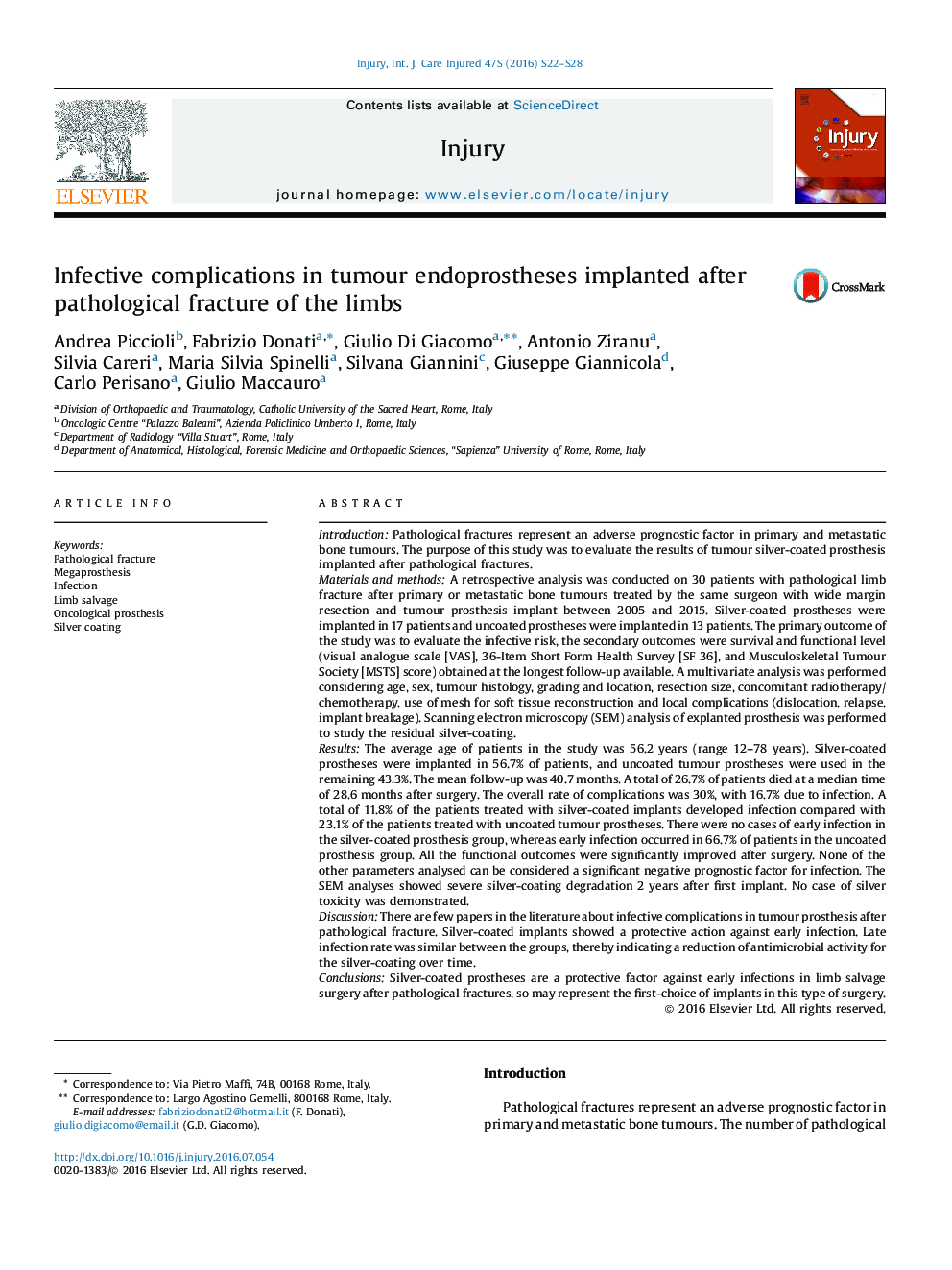| کد مقاله | کد نشریه | سال انتشار | مقاله انگلیسی | نسخه تمام متن |
|---|---|---|---|---|
| 5652569 | 1407220 | 2016 | 7 صفحه PDF | دانلود رایگان |
IntroductionPathological fractures represent an adverse prognostic factor in primary and metastatic bone tumours. The purpose of this study was to evaluate the results of tumour silverâcoated prosthesis implanted after pathological fractures.Materials and methodsA retrospective analysis was conducted on 30 patients with pathological limb fracture after primary or metastatic bone tumours treated by the same surgeon with wide margin resection and tumour prosthesis implant between 2005 and 2015. Silverâcoated prostheses were implanted in 17 patients and uncoated prostheses were implanted in 13 patients. The primary outcome of the study was to evaluate the infective risk, the secondary outcomes were survival and functional level (visual analogue scale [VAS], 36-Item Short Form Health Survey [SF 36], and Musculoskeletal Tumour Society [MSTS] score) obtained at the longest followâup available. A multivariate analysis was performed considering age, sex, tumour histology, grading and location, resection size, concomitant radiotherapy/chemotherapy, use of mesh for soft tissue reconstruction and local complications (dislocation, relapse, implant breakage). Scanning electron microscopy (SEM) analysis of explanted prosthesis was performed to study the residual silver-coating.ResultsThe average age of patients in the study was 56.2 years (range 12-78 years). Silverâcoated prostheses were implanted in 56.7% of patients, and uncoated tumour prostheses were used in the remaining 43.3%. The mean follow-up was 40.7 months. A total of 26.7% of patients died at a median time of 28.6 months after surgery. The overall rate of complications was 30%, with 16.7% due to infection. A total of 11.8% of the patients treated with silverâcoated implants developed infection compared with 23.1% of the patients treated with uncoated tumour prostheses. There were no cases of early infection in the silver-coated prosthesis group, whereas early infection occurred in 66.7% of patients in the uncoated prosthesis group. All the functional outcomes were significantly improved after surgery. None of the other parameters analysed can be considered a significant negative prognostic factor for infection. The SEM analyses showed severe silver-coating degradation 2 years after first implant. No case of silver toxicity was demonstrated.DiscussionThere are few papers in the literature about infective complications in tumour prosthesis after pathological fracture. Silver-coated implants showed a protective action against early infection. Late infection rate was similar between the groups, thereby indicating a reduction of antimicrobial activity for the silver-coating over time.ConclusionsSilver-coated prostheses are a protective factor against early infections in limb salvage surgery after pathological fractures, so may represent the first-choice of implants in this type of surgery.
Journal: Injury - Volume 47, Supplement 4, October 2016, Pages S22-S28
